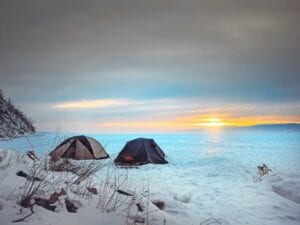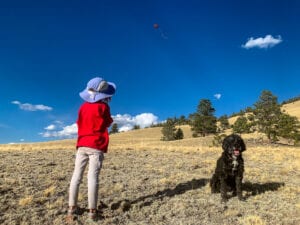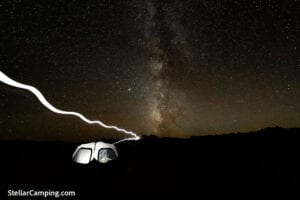Backpacking trip planning

A backpacking trip can feel like a daunting prospect to new backpackers. And yes, it can be challenging to carry a heavy pack and to ensure the pack contains all the gear and supplies you need. In addition, backpacking presents more safety concerns than your average car camping trip. But if you successfully learn how to backpack, you’ll be richly rewarded with a unique experience close to nature.
To help you get you on your way to confident backpacking, we’ve outlined below some of the most important tips for planning your backpacking adventure.
Initial planning: group and route
- Decide whether you want to hike alone (not recommended for first-time backpackers), with friends or family, or as part of a guided trip (which will greatly simplify your planning process!)
- Determine how much time you have and your trip dates
- Gauge how far you’re able to walk each day, remembering a heavy pack slows you down considerably, especially on steep or otherwise challenging topography—5 miles a day may be a good target for a beginner or someone not in great shape, while expert backpackers may be able to walk 10 or 20 miles or more
- If you’re new to backpacking or are taking a kid backpacking for the first time, choose a route that’s relatively easy and close to home
- Identify a route with the qualities you’re looking for, whether that’s great views, a lake, solitude, or wildlife-viewing
- Remember that if you have a certain destination in mind, you can always camp halfway in and do a day hike minus the heavy gear after resting up overnight
- Decide whether to camp at an established backcountry campsite or to find your own campsite (an established campsite may have limited amenities like flat spaces and bear poles, while finding your own site may afford more solitude and independence)
- Assess the topography to make sure your route is doable, remembering that trails with more moderate elevation gain are much easier
- Assess water availability along your route and at your campsite—you’ll need access to a reliable water source (remember that some water sources may go dry during the summer, so consider asking local land managers about water availability)
- Consider possible weather conditions, geologic conditions, natural hazards, and the like—think river crossings, snowfields, and wildlife—so you can plan accordingly
Logistics and rules
- Plan out travel logistics for getting to the area and to the trailhead, in particular, including whether you’ll need a shuttle
- Determine whether you’ll need a permit, as is required in many areas (more popular locations may have a waitlist)
- Check rules for the destination, such as requirements governing bear canisters, dogs, or packing out poop
Gear planning
- Acquire all the gear you need, consulting a backpacking checklist
- Test your gear (especially boots and tent)
- Consider a test run with your gear
- Get a good-quality map of the area, and consider downloading other relevant resources to your phone
- Determine what gear you need for keeping food and toiletries safe from wildlife in your chosen location
Learning
- Learn any skills you may need, such as digging a cathole, securing food from wildlife, setting up your tent, and packing your backpack.
- Consider attending a backpacking class or reviewing online videos to brush up on skills
- Review the Leave No Trace principles, since many backcountry areas are ecologically sensitive, particularly the natural water sources you’ll rely on
Packing
- Use a backpacking checklist
- Coordinate your packing list with other members of your group so you don’t carry unnecessary weight
- Plan out and assemble food
- Pack your pack!
Before you leave
- Consult the long-term weather forecast to make sure your trip is still doable and you have the right gear
- Check for relevant current trail conditions and hazards by reviewing recent posts from hiking websites or by calling land managers
- Check traffic conditions and confirm when the sun will set to make sure you’re leaving enough time to get to your site well before dark
- Leave your trip plans with someone






